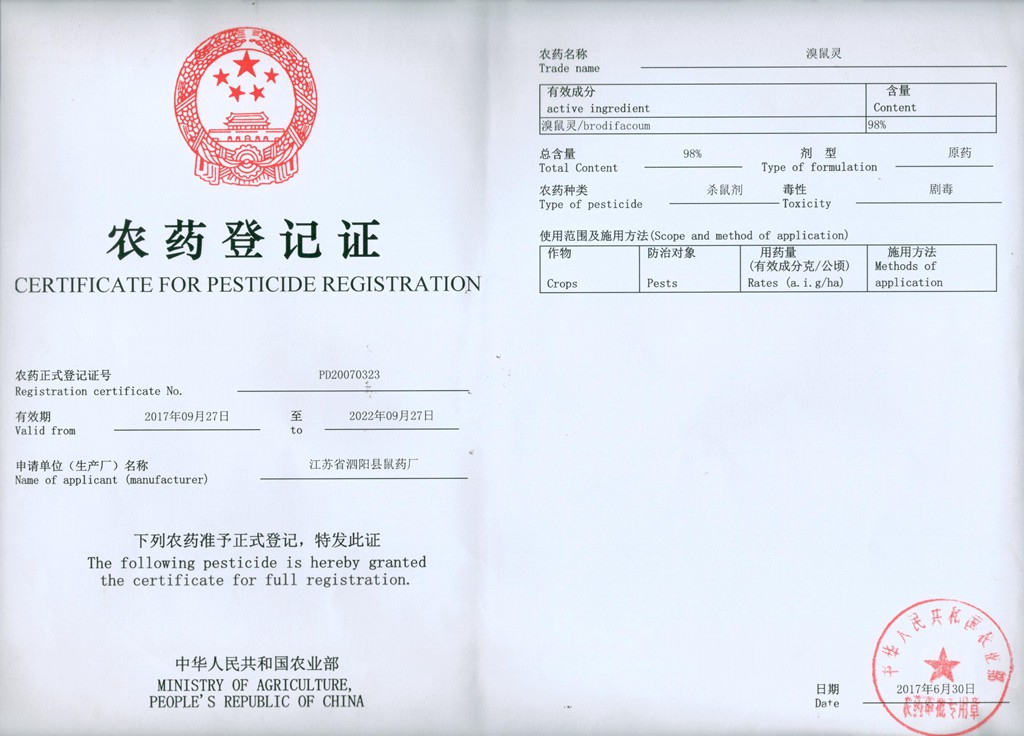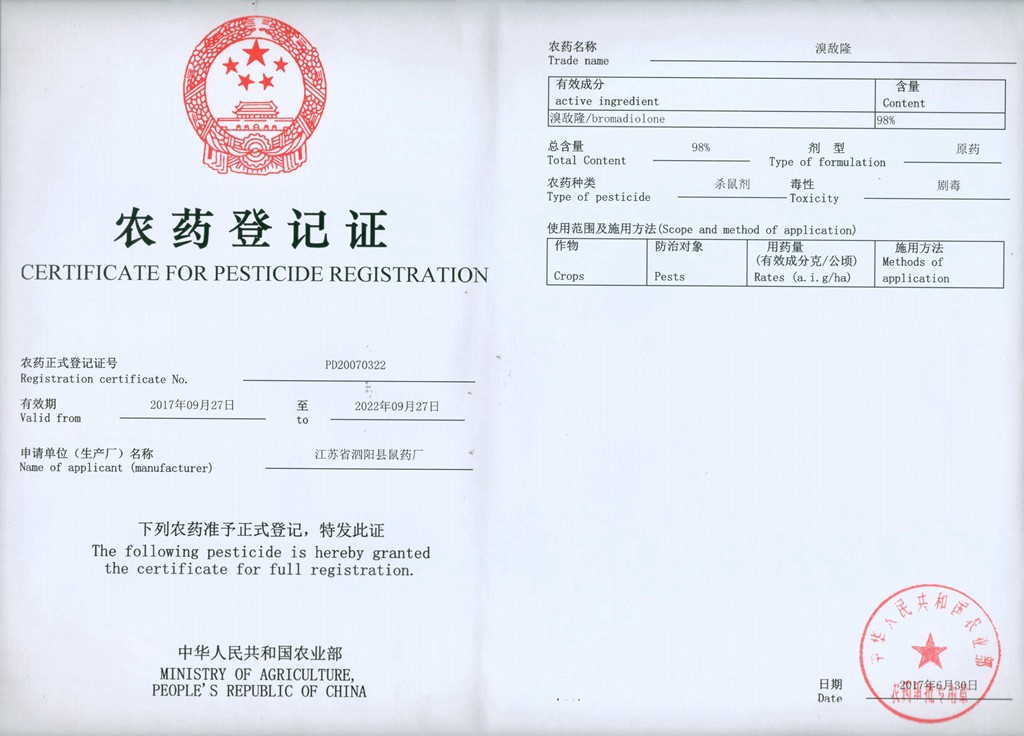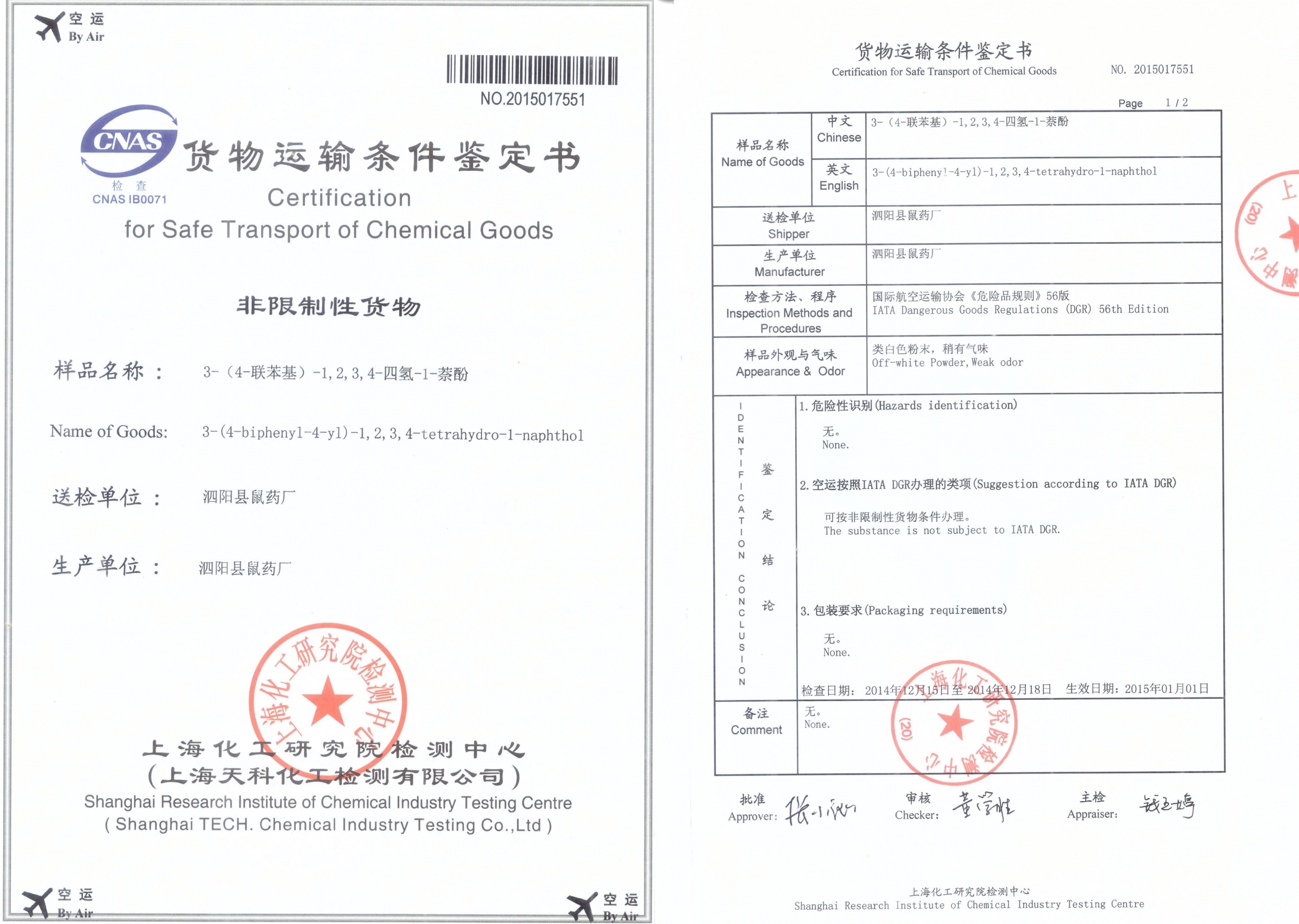Siyang Rodenticide Factory, as the name implies, is a professional rodenticide manufacturing plant located in Siyang County, China. It was established in March 1985.
A leading pioneer in rodenticides in China, successfully industrializing the synthesis of six anticoagulant rodenticides: “Chlorophacinone, Warfarin, Coumatetralyl, Bromadiolone, Brodifacoum and Difenacoum.”
Under China’s latest regulatory reform in 2017, Siyang Rodenticide Factory is now defined as a “designated site of Restricted-Pesticide” by the MOA for supply of Bromadiolone and Brodifacoum.





